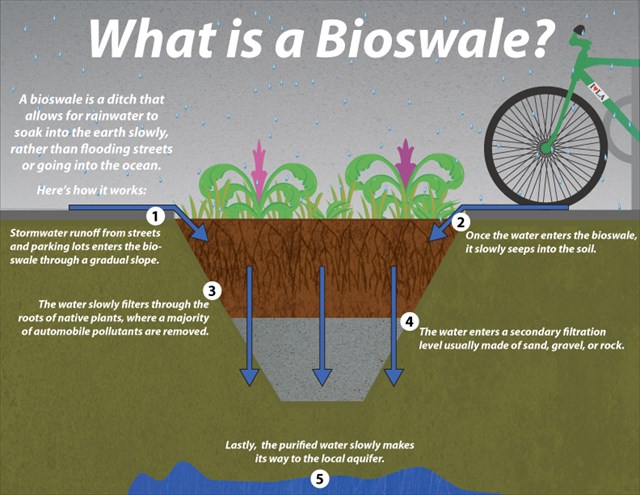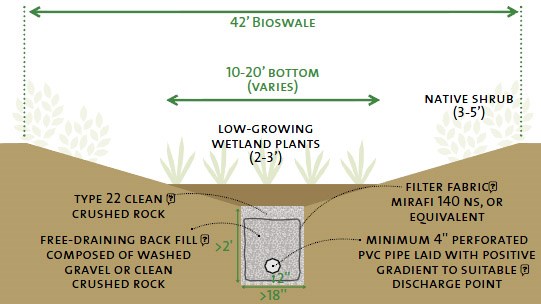Construction on the Flagler Greenway began in March 2012 and was completed in 2015. Total cost for construction of the Flagler Greenway was $800,000. This earthcache will provide some background on how this Greenway is helping to promote Environmental geology.
What is Environmental geology?
It is the branch of geology that is concerned with the interactions between humans and the geologic environment. Environmental geology is essentially a way of applying geologic knowledge to identify, remediate, and hopefully prevent, environmental problems from occurring as a result of people. Environmental geology is a fundamentally important branch of science because it directly impacts every single person on the planet every single day. There is simply no way to avoid the environment around you. The decisions that people, businesses, and governments make regarding the environment and environmental issues impact countless people, not merely the person or people who made the original decision. The human impact of both natural and man-made environmental issues is a significant ethical concern, making proper understanding of the science behind these issues all the more important. One environmental problem common in Fort Lauderdale is urban runoff.
What is urban runoff?
Water running off impervious surfaces (roads, parking lots, sidewalks) tends to pick up gasoline, motor oil, heavy metals, trash and other pollutants from roadways and parking lots, as well as fertilizers and pesticides from lawns. Effective control of urban runoff involves reducing the velocity and flow of stormwater, as well as reducing pollutant discharges. A variety of stormwater management practices and systems may be used to reduce the effects of urban runoff. Some of these techniques focus on water quantity control, while others focus on improving water quality, and some perform both functions.
What is a bioswale?
The word bioswale is a combination of the Greek prefix bio-, meaning life, with the modern word swale, meaning “a low tract of land.” (Merriam Webster Dictionary). A bioswale is an earth-friendly alternative form of water drainage that filters and absorbs polluted water. In contrast to typical pipes and concrete ditches found in residential and commercial zones, bioswales are landscaped shallow troughs comprised of natural materials, such as native plants, rocks and soil. With the use of bioswales around hard surfaces like roads, buildings and parking lots, organizations can promote environmental sustainability while improving the aesthetics of their surroundings.

How do bioswales work?
1. After it rains, runoff from hard surfaces drains into the bioswale through a gradual slope that mimics natural waterways.
2. Once inside the bioswale, the top layer of soil absorbs the water slowly.
3. Next, the water passes through native plant roots, which filter out many of the pollutants. Deep-rooted native plants are preferred to promote water infiltration and reduce maintenance. They are also better at controlling erosion.
4. The water then moves to another filtration level made of sand or rocks.
5. After it has made its way through the bioswale’s multiple layers, the purified water continues its original journey to the local ocean or waterway.
What are the environmental benefits of bioswales?
1. Filtering Pollutants: Studies have found that properly designed and constructed bio-swales treat runoff for pollutants and are able to achieve excellent removal of heavy metals, total suspended solids, oil and grease, bacteria, nutrients, fine sediment and some pesticides and herbicides. Vegetation in a bio-swale helps to slow water velocity and encourage deposition of fine sediment and heavy metals. These pollutants are then immobilized and no longer pose a threat to downstream water quality.
2. Retention and Infiltration: Bioswales can be used to temporarily store runoff water and increase infiltration resulting in reduced runoff volumes and rates. Increased infiltration recharges groundwater and sustains stream base flows.
3. Thermal Pollution: Bioswales also reduce thermal pollution. Stormwater can rise in temperature as it washes across impervious surfaces such as hot parking lots in summer. Heated stormwater flowing into streams can impact fish and other wildlife that depend on cold water streams to live and breed.
The types of bioswales:
1. Grassed swales are planted with turfgrass that is mowed. These provide a more manicured look, but have been demonstrated as less effective in slowing stormwater runoff than swales with taller plants.
2. Vegetated bioswales can be planted with ornamental grasses, shrubs, perennials, or a combination of these. Mulch or stone are used to protect soils in areas not covered by turfgrass. Larger stone can also be used to break up concentrated flows of water and reduce velocity.
3. Xeriscape, or low water use, swales are useful in areas with hot summers or dry conditions. Most bioswales are designed to be dry except just after rain events.
4. Wet swales function similarly to stormwater wetlands.

The bioswale filtration system:
The above picture provides a good visual example of a bioswale filtration system, very similar to the one on the Flagler Greenway. Some key items for any bioswale is that the slope should be fairly flat, but somewhat depressed to minimize the velocity of the water and erosion, and to allow maximum in-filtration. The sloping sides should be a ratio of 2:1 and if possible planted with native species. It is best to follow the contour of the slope for a bioswale to be most effective. In order to increase the water retention capacity perforated pipe can be placed in the trench similar to a French drain. This also allows excess flow to be directed where you want it to go. Landscape fabric is used to cover the perforated pipe to keep the soil from washing in and clogging the pipes.
References: Greencampsinitiative.org, Clemson.edu, GrowNYC.org and Study.com
To claim credit for this earthcache please email me or message me through the geocaching site the answers to these questions:
1. What is the difference between a bioswale and a traditional concrete ditch?
2. How do these bioswales help in regards to urban runoff?
3. Looking at the bioswales along the Flagler Greenway, what type of bioswale did the City of Fort Lauderdale choose? Why do you think so?
4. Go to the corner of the bioswale and dig down an inch or two with your fingers which will show you three different layers of the filtration system. Include a description of each layer and how they are supporting environmental geology?
Pictures are always nice but completely voluntary. Group answers are not accepted. Anyone logging must send answers.